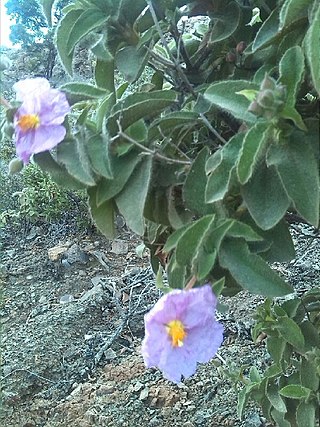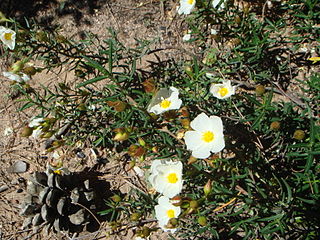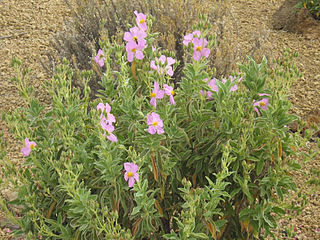| Cistaceae | |
|---|---|
 | |
| Cistus incanus | |
| Scientific classification | |
| Kingdom: | Plantae |
| Clade: | Tracheophytes |
| Clade: | Angiosperms |
| Clade: | Eudicots |
| Clade: | Rosids |
| Order: | Malvales |
| Family: | Cistaceae Juss. [1] |
| Genera | |
The Cistaceae are a small family of plants (rock-rose or rock rose family) known for their beautiful shrubs, which are profusely covered by flowers at the time of blossom. This family consists of about 170(-200) species in nine genera [2] that are not very distinct, distributed primarily in the temperate areas of Europe and the Mediterranean basin, but also found in North America; a limited number of species are found in South America. Most Cistaceae are subshrubs and low shrubs, and some are herbaceous. They prefer dry and sunny habitats. Cistaceae grow well on poor soils, and many of them are cultivated in gardens.
Contents
- Ecology
- Systematics
- Cultivation and uses
- Symbolism
- Synonymous genera
- Fossil record
- References
- External links
They often have showy yellow, pink or white flowers, which are generally short-lived. The flowers are bisexual, regular, solitary or borne in cymes; they usually have five, sometimes three, petals ( Lechea ). The petals are free, usually crumpled in the bud, and sometimes in the open flower (e. g. Cistus incanus ). It has five sepals, the inner three of which are distinctly wider, and the outer two are narrow and sometimes regarded as bracteoles. The sepal arrangement is a characteristic property of the family.
The stamens are numerous, of variable length, and sit on a disc; filaments are free. The ovary is superior, usually with three carpels; placentation is parietal, with two or more ovules on each placenta. The fruit is a capsule, usually with five or ten valves (three in Helianthemum). The seeds are small, with a hard, water-impermeable coating, weighing around 1 mg. [3] [4] [5] [6] [7]
Recently the neotropical tree Pakaraimaea dipterocarpacea is placed here, following APG IV (2016) [8]


















